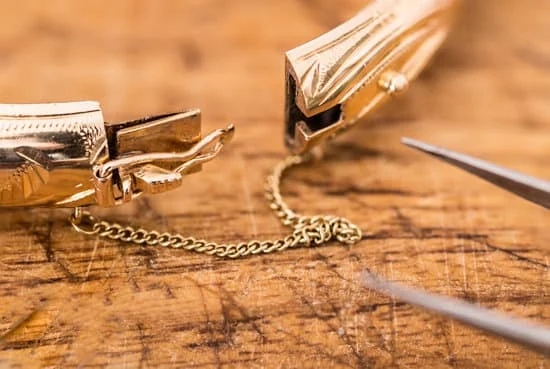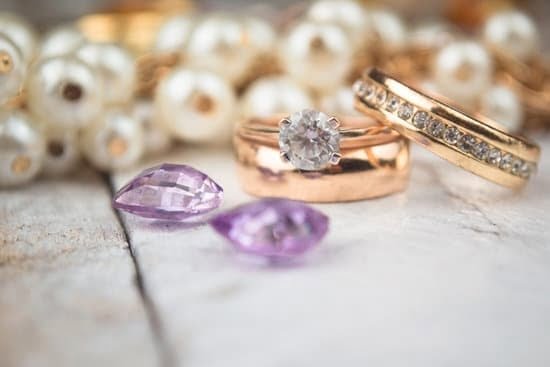The history of Roman glass jewelry dates back to ancient times, offering a fascinating glimpse into the artistry and craftsmanship of the Roman Empire. From its origins in ancient Rome to its modern influence on contemporary jewelry design, the story of Roman glass jewelry is a testament to its enduring legacy and timeless beauty.
The evolution of glassmaking in Rome played a significant role in the development of Roman glass jewelry. By unraveling the secrets of ancient glass production techniques, we gain a deeper appreciation for the intricate designs and techniques used in creating these pieces of wearable art. The cultural and symbolic meaning of Roman glass jewelry also adds to its historical significance, reflecting the traditions and beliefs of ancient Roman society.
Furthermore, the preservation and rediscovery of ancient Roman glass jewelry tell a fascinating story of unearthing these precious artifacts. As we delve into this captivating history, we can better understand how Roman glass jewelry continues to inspire collectors, enthusiasts, and contemporary jewelry designers alike. In this article, we will explore the beauty and intriguing history of Roman glass jewelry, from its origins in ancient Rome to its modern-day influence on the world of fine jewelry.
Ancient Roman Glass
Dating back to as early as the 1st century BC, the history of Roman glass jewelry is closely intertwined with the origins and evolution of glassmaking in Rome. The ancient Romans were among the first civilizations to truly master the art of glass production, creating exquisite pieces of jewelry that still captivate us today. Let’s take a closer look at how the ancient Romans revolutionized the world of glassmaking.
- Early Beginnings: The production of glass in ancient Rome can be traced back to around 50 BC, when Roman artisans began experimenting with different techniques to create glass objects. Initially, glass was primarily used for practical purposes such as containers and vessels, but it wasn’t long before its beauty and versatility led to the creation of stunning jewelry pieces.
- Technological Advancements: Over time, Roman glassmakers developed innovative techniques for shaping and coloring glass, allowing them to create intricate designs that were unmatched by any other civilization at the time. This technological prowess paved the way for the creation of exquisite Roman glass jewelry that remains unparalleled in its beauty and craftsmanship.
- Influence and Legacy: The art of Roman glassmaking not only influenced jewelry production within the empire but also spread throughout Europe and beyond, leaving a lasting legacy that continues to inspire contemporary artisans. The enduring appeal of Roman glass jewelry speaks volumes about its cultural significance and timeless allure.
The history of Roman glass jewelry is a testament to the ingenuity and creativity of ancient Roman craftsmen, who elevated the art of glassmaking to new heights. From its humble beginnings as utilitarian objects to becoming coveted adornments, Roman glass jewelry has left an indelible mark on history and continues to enchant us with its beauty and historical significance.
Glass Production Techniques
Introduction to Roman Glassmaking
The history of Roman glass jewelry is closely intertwined with the innovative and advanced glass production techniques developed by the ancient Romans. The art of glassmaking in Rome can be traced back to as early as the 1st century BCE, and it quickly became a significant industry in the Roman Empire. The Romans revolutionized the manufacturing process of glass, creating intricate and decorative glassware that included stunning pieces of jewelry.
Ancient Roman Glassmaking Methods
One of the most remarkable aspects of ancient Roman glass production was the diversity of techniques utilized. The Romans were skilled in a wide range of methods including core forming, casting, cutting, and engraving. Additionally, they developed new ways to manipulate molten glass by using molds and applying colorful decorations through processes such as gold leaf application or glass blowing. These techniques allowed for the creation of an array of exquisite jewelry pieces that showcased vibrant hues and intricate patterns.
Innovation and Legacy
The innovation and craftsmanship associated with ancient Roman glassmaking continue to inspire contemporary artisans and designers. The legacy of these ancient techniques is evident in modern jewelry making, with many artists incorporating elements from Roman glass designs into their own creations. Furthermore, the enduring appeal of Roman glass jewelry serves as a testament to the ingenuity and artistry of the craftsmen who perfected these techniques over two millennia ago.
As we delve into the history of roman glass jewelry, it becomes apparent that understanding the production techniques used in ancient Rome is crucial to appreciating the exquisite beauty and allure of these timeless artifacts.
Roman Glass Jewelry
The production of Roman glass jewelry involved a variety of intricate techniques that set it apart from other forms of ancient jewelry making. These techniques included:
- Glass blowing: Romans were known for their mastery of glass blowing, which allowed them to create delicate and elaborate glass beads, pendants, and other components for their jewelry pieces.
- Mosaic glasswork: Another distinctive technique used in Roman glass jewelry was mosaic glasswork, which involved assembling small, multicolored glass fragments to form striking patterns and designs.
- Engraving and etching: Roman artisans also employed engraving and etching methods to add intricate details and motifs to their glass jewelry, showcasing their skill in working with this fragile yet versatile material.
The use of vibrant colors was another defining feature of Roman glass jewelry. These ancient artisans were adept at creating a wide range of hues by incorporating different minerals into the glass-making process, resulting in a dazzling array of colors that are still visible in the surviving pieces today. The combination of advanced techniques, innovative design concepts, and rich colors contributed to the enduring appeal of Roman glass jewelry throughout history.
The legacy of Roman glass jewelry lives on as a remarkable symbol of ancient artistry and cultural heritage. Its unique blend of technical excellence, aesthetic beauty, and historical significance continues to captivate collectors, historians, and admirers alike. By understanding the intricate designs and techniques used in creating these extraordinary pieces, we gain a deeper appreciation for the enduring legacy and timeless allure of Roman glass jewelry.
Historical Significance
Glass has been an important material in jewelry making for centuries, and the history of Roman glass jewelry is a fascinating aspect of this ancient art form. The cultural and symbolic meaning of Roman glass jewelry provides insight into the values and beliefs of the people who crafted and wore these pieces.
In ancient Rome, glass jewelry was not only worn for its aesthetic value but also held significant cultural and symbolic meaning. Glass was associated with luxury and wealth, as the vibrant colors and intricate designs used in Roman glass jewelry were indicative of social status. Additionally, certain symbols and motifs found in Roman glass jewelry were believed to hold protective or spiritual significance for the wearer.
The use of glass in jewelry making also reflects the influence of ancient Roman trade and cultural exchange. The production and distribution of Roman glass jewelry across the Mediterranean region contributed to the spread of artistic techniques and design motifs, creating a shared visual language among different cultures. This historical significance highlights the role of ancient Rome as a center for innovation in art and craftsmanship.
| Historical Significance | Cultural Symbolism |
|---|---|
| Ancient Rome | Representation of Wealth |
| Trade Influence | Spiritual Meaning |
Preservation and Rediscovery
Rediscovering Ancient Treasures
The history of Roman glass jewelry is a captivating tale of preservation and rediscovery. For centuries, the beauty and craftsmanship of these ancient artifacts lay buried beneath the earth, waiting to be unearthed and appreciated once again. Thanks to archaeological efforts and excavations, these treasures have been brought back into the light, allowing us to marvel at the stunning pieces created by skilled artisans in ancient Rome.
Unearthing Historical Artifacts
The rediscovery of Roman glass jewelry has provided valuable insights into the artistry and technology of ancient glassmaking. By studying these artifacts, researchers have been able to piece together a clearer picture of the techniques used by Roman artisans to create these exquisite pieces. Furthermore, the intricate designs and symbols found on Roman glass jewelry have shed light on the cultural and symbolic significance they held for ancient Romans, offering a window into their beliefs and values.
Preservation Efforts
Preserving ancient Roman glass jewelry has been a delicate process, requiring careful handling and conservation methods to ensure that these fragile artifacts remain intact for future generations to appreciate. Museums and institutions around the world have dedicated resources to safeguarding these precious relics, employing specialized techniques to protect them from degradation while still making them accessible for study and display.
The painstaking efforts involved in preserving and documenting these historical objects have allowed us to continue learning from their rich cultural heritage.
Modern Influence
Roman glass jewelry continues to captivate the modern world with its rich history and timeless beauty. The influence of ancient Roman glass can be seen in contemporary jewelry design, as artisans and designers draw inspiration from the intricate techniques and stunning aesthetic of this ancient art form.
One of the most striking aspects of Roman glass jewelry is its vibrant colors. The use of blues, greens, and other earthy tones create a sense of natural beauty that resonates with modern jewelry enthusiasts. This color palette has been incorporated into modern designs, adding a touch of history and authenticity to contemporary pieces.
In addition to color, the unique patina of Roman glass has also made a lasting impact on modern jewelry. The weathered and iridescent look of ancient Roman glass creates a sense of mystery and depth in contemporary designs. By incorporating fragments of authentic Roman glass into their pieces, jewelers are able to infuse their work with a sense of timeless elegance.
The enduring legacy of Roman glass jewelry can be seen in the way it continues to inspire contemporary designers around the world. From small-scale artisans to high-end jewelry houses, the influence of ancient Roman glass is unmistakable in the modern jewelry landscape.
| Aspect | Description |
|---|---|
| Color Palette | The vibrant colors used in ancient Roman glass have influenced modern designs. |
| Patina | The weathered and iridescent look of Roman glass has made an impact on contemporary jewelry. |
| Influence | Ancient Roman glass continues to inspire designers worldwide. |
Collecting and Owning Roman Glass Jewelry
When it comes to collecting and owning Roman glass jewelry, there are several tips and insights that can help both enthusiasts and curators navigate this fascinating world. One of the first things to consider is the authenticity of the piece. Given the rich history of Roman glass jewelry, there are many reproductions on the market. It is important to do thorough research and if possible, seek the expertise of a reputable appraiser or jeweler who specializes in ancient jewelry.
For those who are passionate about building a collection, it’s essential to understand the different types of Roman glass jewelry available. This includes understanding the various styles, techniques, and designs that were prevalent during different periods of ancient Rome. From mosaic glass pendants to intricate earrings and bracelets, each piece offers a glimpse into the artistry and craftsmanship of its time.
Another important consideration for collectors is the preservation and care of Roman glass jewelry. Due to its age and delicate nature, proper storage and handling are crucial in maintaining the integrity of these pieces. Avoiding exposure to extreme temperatures, direct sunlight, and harsh chemicals is essential in preserving their beauty for future generations.
As for curators looking to showcase Roman glass jewelry in museums or exhibitions, it’s vital to provide educational resources along with the display. Sharing insights into the historical significance, cultural symbolism, and production techniques will enrich visitors’ understanding and appreciation of these ancient artifacts. By highlighting the enduring legacy and timeless beauty of Roman glass jewelry, curators can inspire new generations to value and preserve these remarkable pieces.
Conclusion
In conclusion, the history of Roman glass jewelry is a testament to the enduring legacy and timeless beauty of this ancient art form. The origins and evolution of glassmaking in Rome have contributed to the sophistication and innovation of glass production techniques, resulting in the creation of stunning and intricate Roman glass jewelry. The cultural and symbolic significance of these pieces further adds to their allure, making them not only aesthetically pleasing but also historically significant.
The preservation and rediscovery of Roman glass jewelry have unveiled a fascinating story of unearthing these ancient treasures, providing insight into the craftsmanship and skill of ancient artisans. Furthermore, the modern influence of Roman glass jewelry continues to inspire contemporary jewelry design, showcasing its enduring appeal across generations and cultures. Whether as collectors or curators, enthusiasts can appreciate the artistry and historical value of Roman glass jewelry, making it a valuable addition to any collection.
Ultimately, the beauty and rich history of Roman glass jewelry make it a unique and cherished art form that transcends time. Its enduring legacy serves as a reminder of the craftsmanship and creativity of ancient civilizations, captivating the imagination and admiration of people around the world. As we continue to uncover more about this ancient art form, it is evident that Roman glass jewelry will continue to hold a special place in our hearts and minds for years to come.
Frequently Asked Questions
Where Does Roman Glass for Jewelry Come From?
Roman glass for jewelry comes from ancient Roman artifacts that have been excavated and then repurposed into stunning pieces of jewelry. These artifacts are often found in archaeological sites in modern-day Israel.
How Can You Tell if Roman Glass Is Real?
You can tell if Roman glass is real by examining its color and patina. Authentic Roman glass will have an iridescent rainbow-like sheen, caused by centuries of mineral deposits forming on the surface. Additionally, real Roman glass will have tiny imperfections and weathering that indicate its age and authenticity.
Why Can’t You Get Roman Glass Wet?
You cannot get Roman glass wet because it is fragile and can degrade when exposed to moisture. The process of creating the unique patina on Roman glass involved burying it in soil for centuries, so getting it wet could potentially damage or alter its appearance.
It’s important to handle Roman glass jewelry with care to preserve its historical value and beauty.

Welcome to my jewelry blog! My name is Sarah and I am the owner of this blog.
I love making jewelry and sharing my creations with others.
So whether you’re someone who loves wearing jewelry yourself or simply enjoys learning about it, be sure to check out my blog for insightful posts on everything related to this exciting topic!





